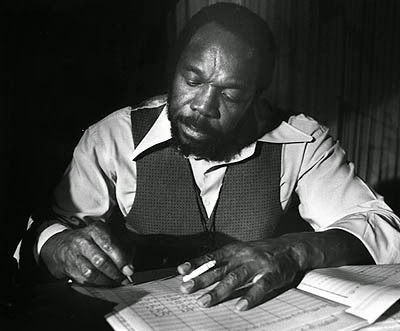In his live shows, Frank Sinatra always liked to present himself as a saloon singer, a performer of what is known as saloon songs—that is, tunes about love found and then lost or perhaps never found at all in the first place. These are sad, melancholy songs of self-pity to be sung to the accompaniment of a lone piano, usually set in a bar or a tavern, in those wee small hours of the morning, and often presented in the form of monologue, with the vocalist bending the ear of an imaginary bartender. Harold Arlen and Johnny Mercer's "One for My Baby (And One More for the Road)" and Matt Dennis and Earl Brent's "Angel Eyes" were Sinatra's saloon songs of choice, and he counted Tony Bennett and Dean Martin ("drunky Dean," as the Chairman would have it) as fellow saloon singers, and even though he never recorded a full album of classic saloon songs—Reprise's She Shot Me Down, from 1981, was the closest he ever got—this remained one of his favorite types of songs to sing throughout his career. Yet Sinatra's tally of saloon singers is grossly incomplete because he failed to mention Bobby Short and the man whose career we are discussing today—Hugh Shannon.
 |
| Billie Holiday encouraged Shannon to become a singer |
Listening to Shannon, born in DeSoto, Missouri, into an Irish American family in 1921, one wonders just how much Tony Bennett was influenced by the smoky tone of his voice. Raised by his grandparents, Shannon became interested in the piano at an early age but did not become a professional singer until after World War II, when he supposedly decided to follow Billie Holiday's advice and began singing in clubs and bars around New York City, catering to the smart set and befriending the rich and famous. In a piece about him published in The New York Times in 1981, just a few months before his death, Shannon described the type of audiences for whom he played throughout his long career:
We [he and Bobby Short] both deal with ladies and gentlemen. They're established. They have manners. They're attractive. And, for the most part, they're rich. They have good impulses for living and like living well. And the songs we sing are about people who like living well, not about the depraved or the deprived.
These words may go a long way to explain Shannon's reputation for being a snob (which, according to many friends and fans, he most definitely was not), yet they do accurately describe the crowds that flocked to his shows at New York nightspots such as Le Perroquet, the Cafe Carlyle, and the 22 Club, and bearing in mind his fondness for the songbooks of Cole Porter, Rodgers and Hart, Noël Coward, and Jerome Kern, among many others, they offer a truthful description of his repertoire as well. In that same New York Times article, Shannon also discusses his approach to performing: "I treat the room as a drawing room where I'm giving a party. It never occurs to me that I'm not the host. I watch the tables. I watch the drinks. I have to restrain myself not to seat people." And this intimacy was definitely an important part of Shannon's appeal, together with his penchant for witty humor, his sense of devil-may-care detachment when singing these songs, and the fact that he proved to be a walking encyclopedia of the Great American Songbook every time he sat at the piano. In this regard, he was to the Songbook what Leadbelly was to American folk music, and his art was appreciated by audiences both at home and overseas, where he occasionally performed at exclusive venues in places like France and Italy.
Regrettably, Shannon left us a rather meager recorded legacy, perhaps because he was best experienced live, and his art, like that of Noël Coward, did not translate so well to the medium of recordings. However, there are two Audiophile Records releases that anyone interested in Shannon's saloon singing should own. The most complete is a two-CD set entitled simply Saloon Singer that features Bobby Hackett on cornet on some of the tracks and that includes classics like "Everything Happens to Me," "Let's Do It (Let's Fall in Love)," "Down in the Depths of the 90th Floor," and the Jeri Southern-associated "You Better Go Now." Alongside this, the single CD True Blue Hugh offers sixteen tracks recorded in Lexington, South Carolina, in December of 1977, with Shannon alone at the piano, except for two tracks on which he is accompanied by Terry Lassiter on bass and Jim Lackey on drums. This album contains two songs closely associated with Shannon, "True Blue Lou" and "It's a Big, Wide, Wonderful World" (a minor hit for crooner Buddy Clark in the late '40s), along with other gems such as "A Hundred Years from Today," "Baltimore Oriole," "It Never Entered My Mind," "As Time Goes By," and a medley of "Just a Gigolo" and Cole Porter's "I'm a Gigolo." Shannon's passing in New York City in 1982, at age 61, deprived the world of one of the best saloon singers who ever lived, a man who not only defined that difficult art, but who lived and breathed it as well.
 |
| Sketch of Hugh Shannon that appears on the cover of the CD Saloon Singer |
































